Last December, five employees from Ruger and three media representatives met for a four-day SAAM Field to Fork course at the FTW Ranch in Texas. SAAM stands for Sportsman’s All-Weather All-Terrain Marksmanship. The school’s motto is “Because you only have one first shot!”
Sponsored by Ruger
The Ruger employees – except one – were female, arriving with a wide range of shooting and hunting experience. All the media folks – Karen Mehall Phillips, Andrea Bogard and I – brought hunting and shooting experience to the field.
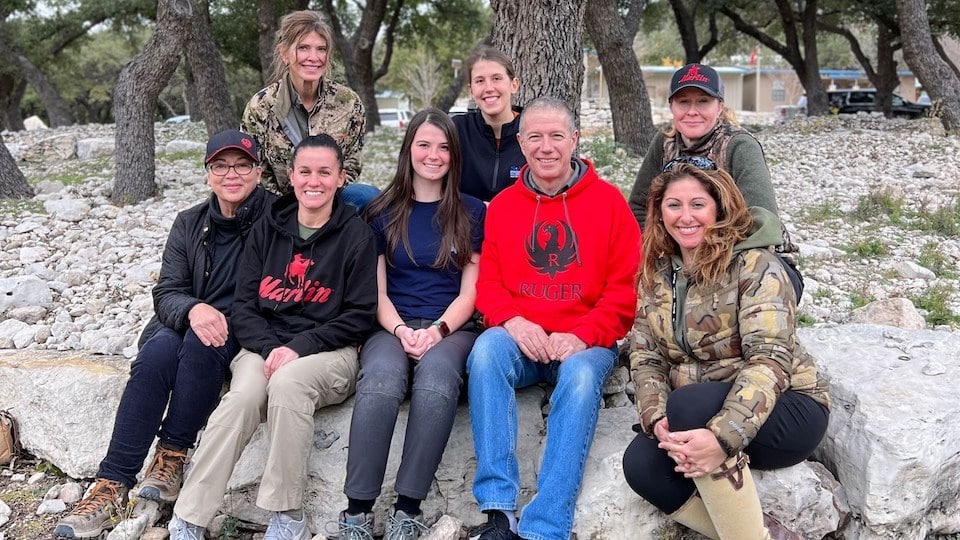
The course caters to all skill levels and included the following sessions:
We flew into San Antonio, rented cars and headed to the ranch, which lies almost 3 hours northwest of the airport on 12,000 acres of Texas Hill Country. We easily settled in. How could you not be comfortable at this place? The facilities include 13 cabins with ensuite bathrooms, an 8,000-square-foot lodge filled with big comfy couches and interesting mounts from around the world, fully stocked bar, classroom, gym and store (logo wear, ammo, rifle rentals). Outside, the ranch offers 26 ranges, with some ranges extending out past 500 yards, along with a fleet of jeeps. It also provides realistic shooting situations for hunting around the world, and is home to several exotic wild animals.
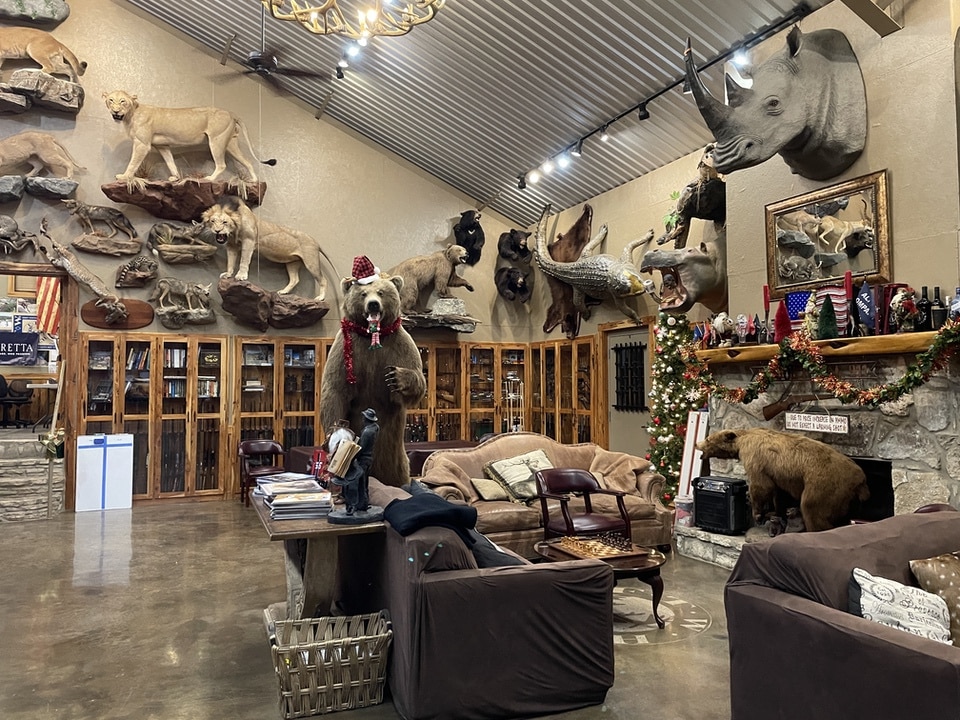
A cadre of instructors included excellent marksmen and hunters, including several former military snipers and a South African guide name Cali. The team worked like a well-oiled machine, making sure we not only understood the concepts presented, but also that we could put the newfound skills to successful use on the ranges and later, in the field. Also, the team showed great respect to us, throughout the four days.
The FTW Ranch offers hunts for species no longer huntable in their indigenous countries, including Nubien Ibex, Turkoman Markhor, Armenian and Axis deer, along with whitetail deer (the only exception).
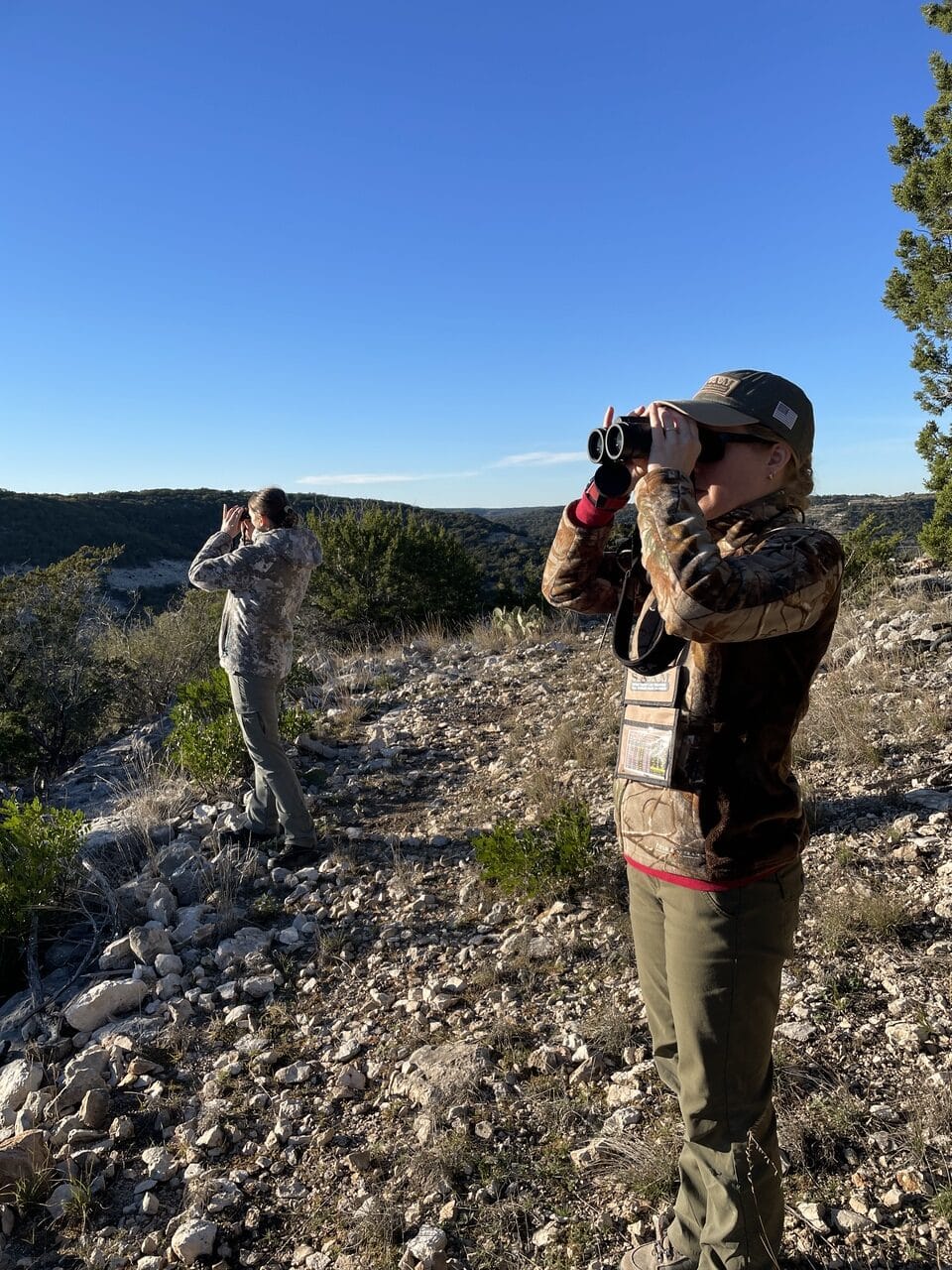
We spent time onsite with a family from the Georgia who routinely visit the ranch and make it a hunting holiday. But this time, they wanted to learn more hunting skills, as well as actually hunt. At the end of the course, the dad brought in a beautiful Iranian red sheep.
Day 1 began in the classroom and included gun cleaning, principles of marksmanship, range card verification and shot placement on animals. Then, we headed out to the range with our rifles for zeroing them, and of course, using the principles of marksmanship. Later, we used laser pointers back in the classroom to indicate where to take shots on animals presented on a large screen in front of us. Not all of them had nicely quartered to the camera, and it brought home the importance of shot placement for a one-shot hunt.
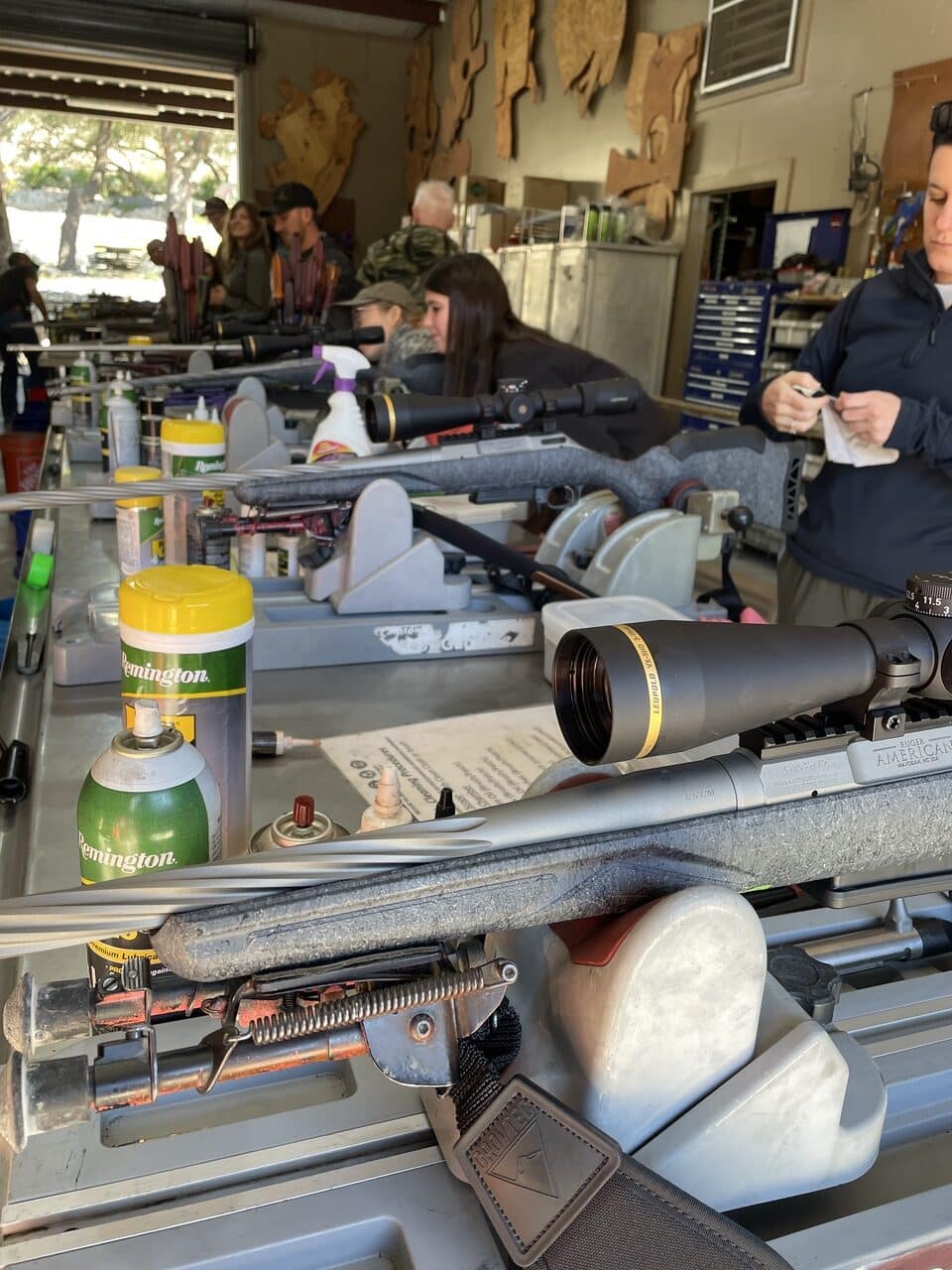
In the classroom, we further refined placement skills in lessons that included how to account for bullet drop and drift, along with understanding an MOA range card, designed especially for the rifles we would be using. Those of us from Ruger used the new American Generation II, except for Sarah Colbert, who used the left-handed model of the Hawkeye.
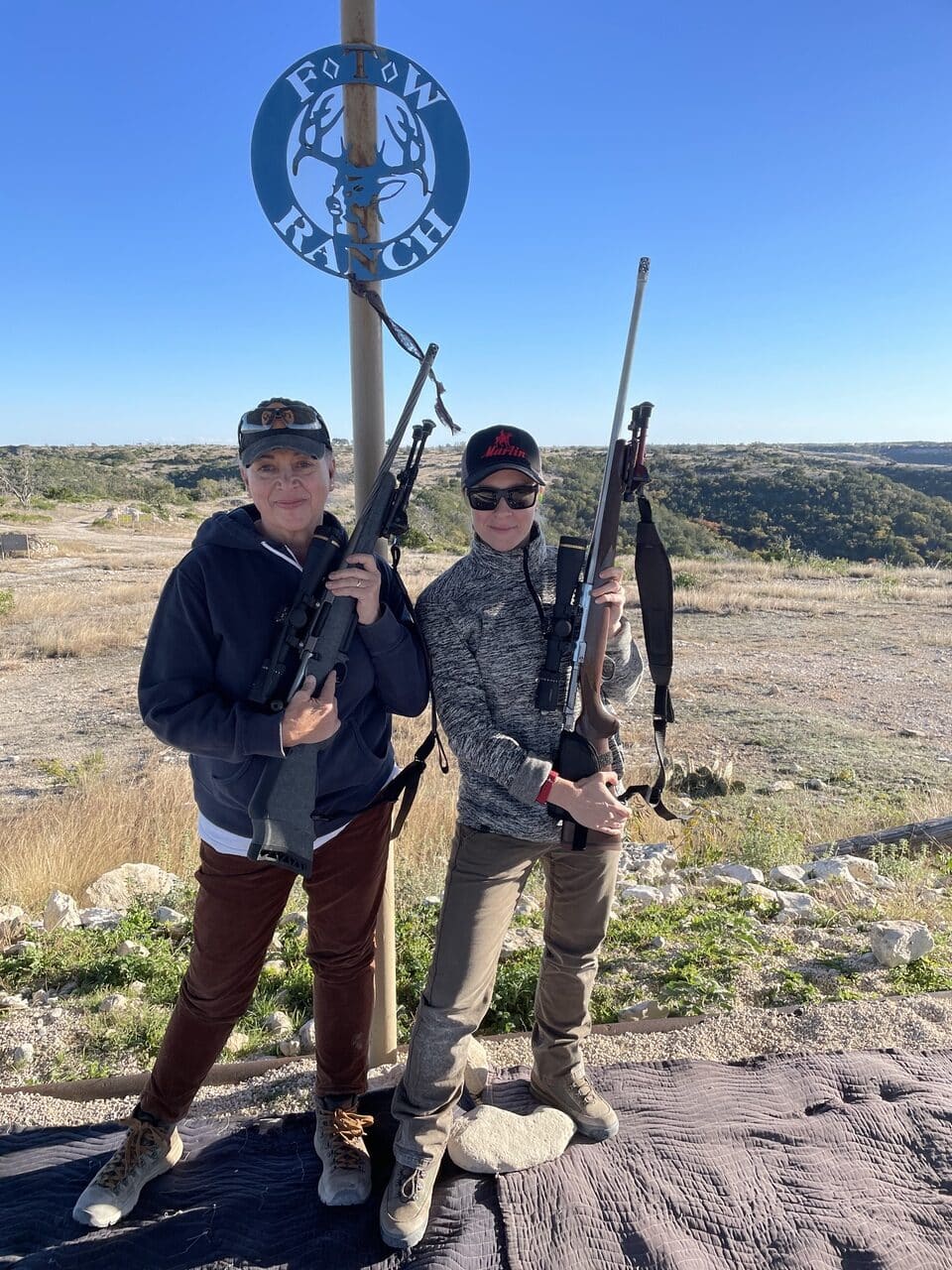
On Day 2, it came time to put knowledge into action and we took our range cards and rifles out to windy ridges and steep elevations. The instructors (former military snipers for the most part) ran us through various thought-provoking drills. At one point, with frustration at its peak in my mind, I asked my instructor for a windage read and he calmly told me to figure it out – which I did, and I thanked him later for that technique of reminding me to take ownership of the shot. We shot at different elevations and at one point, out to 700 yards. Did I mention the wind? Sometimes, it measured more than 20 mph, and of course, we learned to deal with it.
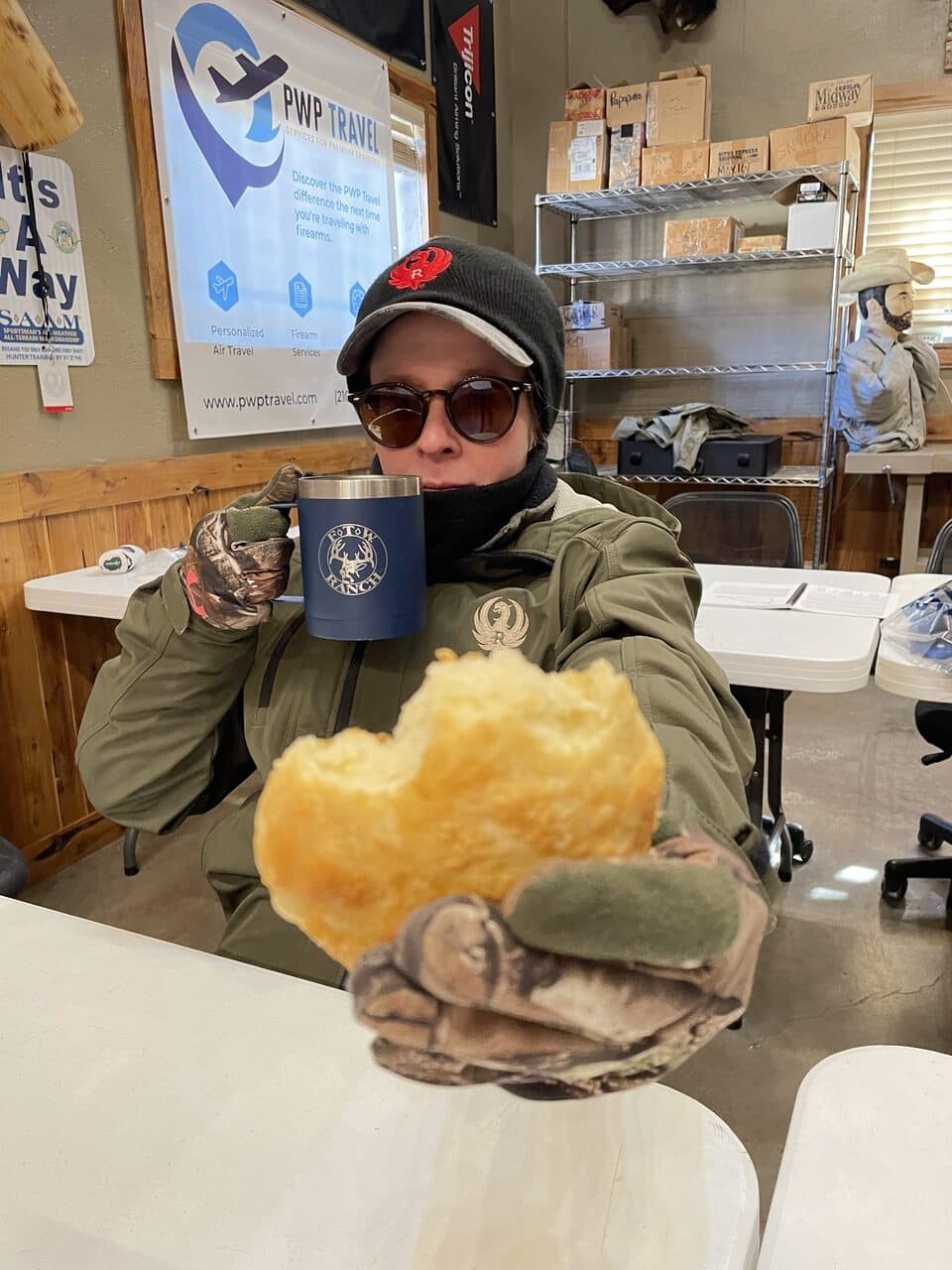
That afternoon, after another delicious meal, we changed into our hunting clothes and headed out in groups. My group consisted of Sarah Colbert, who is the vice-president of administration at Ruger, and, Erica Cappellino, the marketing communications manager. We decided that Sarah should be the first hunter, and that meant she would spot-and-stalk an Axis buck. Our guide, Cali, from South Africa, took us to a high point and we waited and glassed through binos until the buck appeared, almost at sunset. Sarah and Cali crept and crawled down to within about 180 yards of the buck, grazing in a field. She took one shot, and he went down.
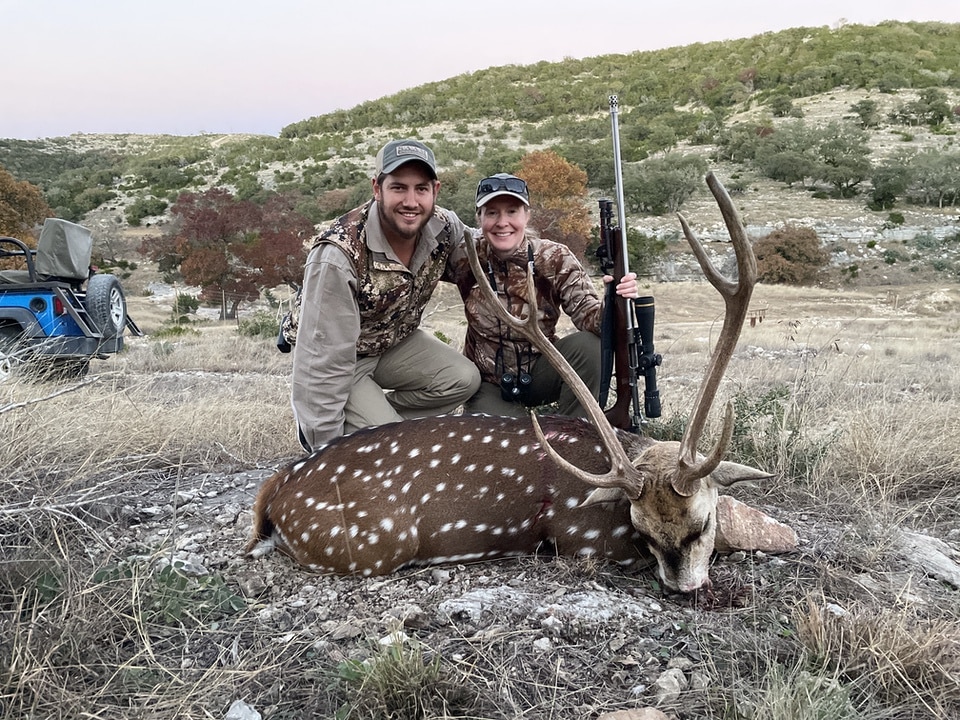
Erica and I headed down to the site where the buck lay, and we watched that awe-inspiring moment when a hunter approaches her first harvest of a large, wild game animal. Let’s just say there wasn’t a lot of whooping and hollering, but reverence and a quiet moment of respect for what had just transpired. In fact, there might have been a few tears in our eyes.
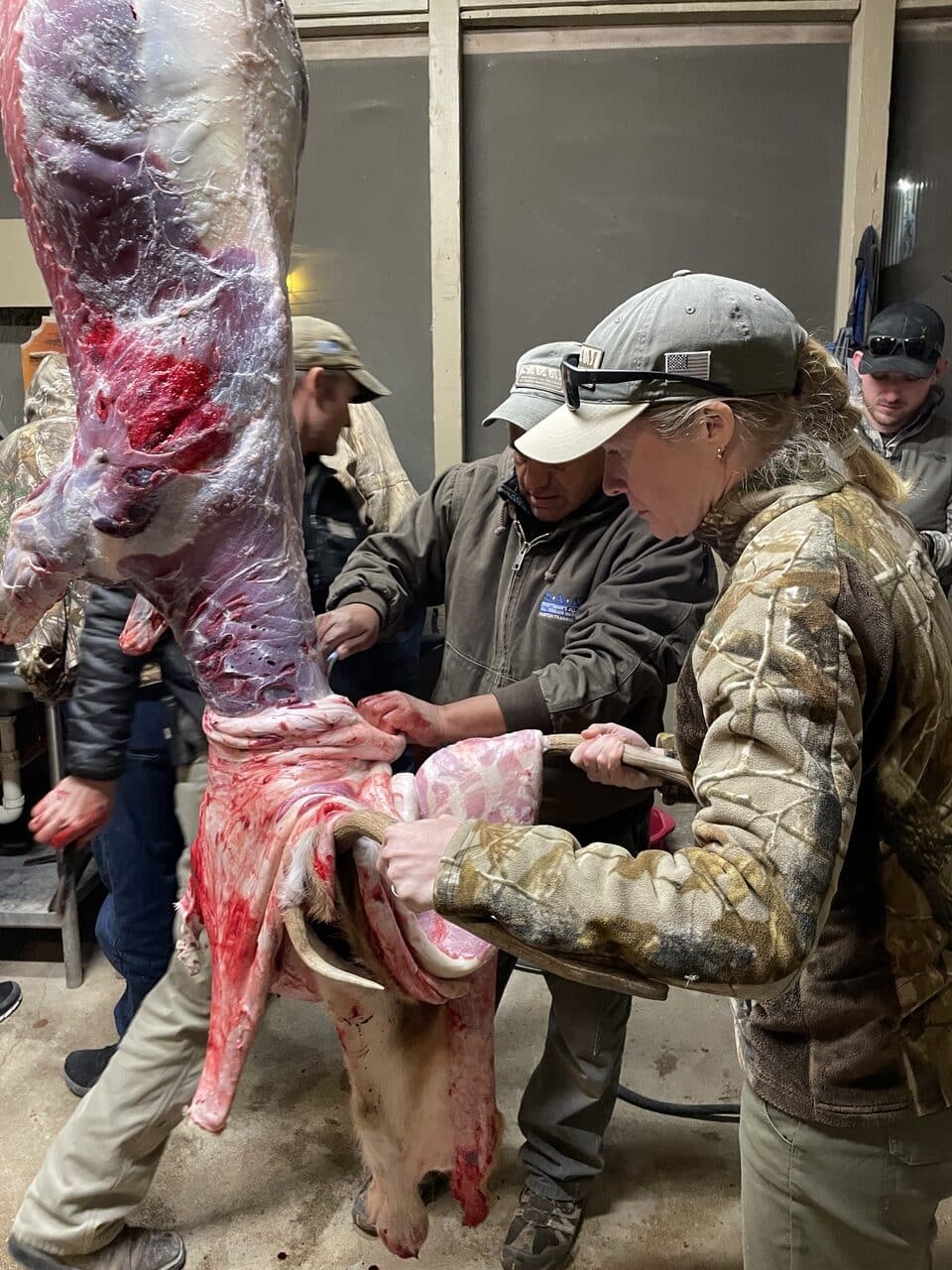
Now, really, the work would begin. It came time to learn about transition skills between the field and the fork.
Day 3 found us hunting again, after we discussed game laws, and the importance of hunting for conservation – based on wildlife science across the world. We met our chef, Josh Schwencke, owner of Gastronomy Live. During the rest of our time there, Josh would become an integral part of the course – from being on hand during the skinning process, and instructive in the field dressing and finally, butchering classes. Josh also demonstrated a backstrap for an appetizer using the sous vide (hot water bath) method.
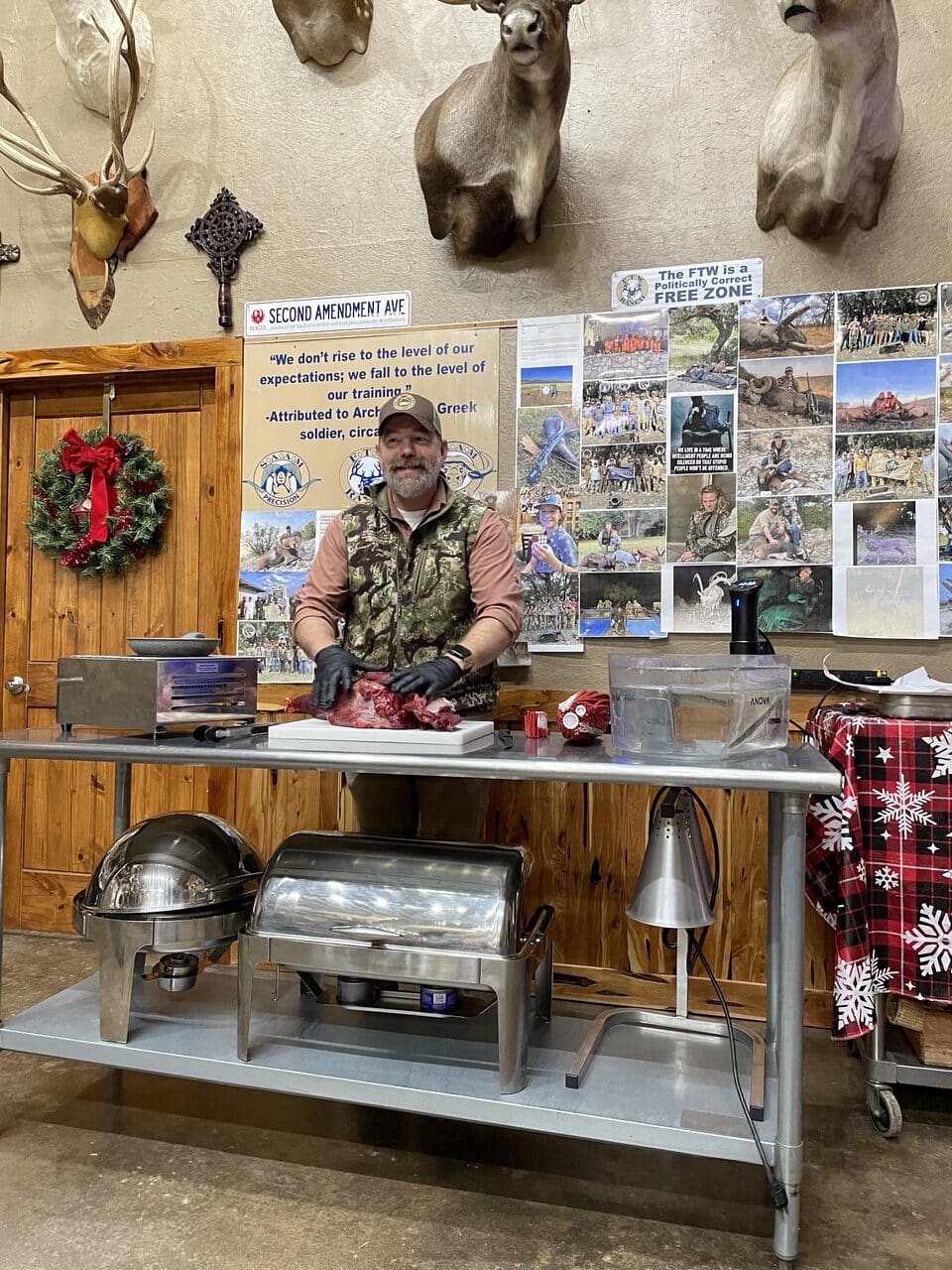
On day 4, we started the day early, heading out to hunt as the sun rose. Unfortunately, we didn’t see any more approved bucks to cull in our group, but we enjoyed our time on the ridge, and then, later, it was back to work doing the butchering and learning about cuts of meat, in the shop near the lodge. Sharp knives, lots of counter tops and plenty of flowing water made the process for the team fast and tidy.
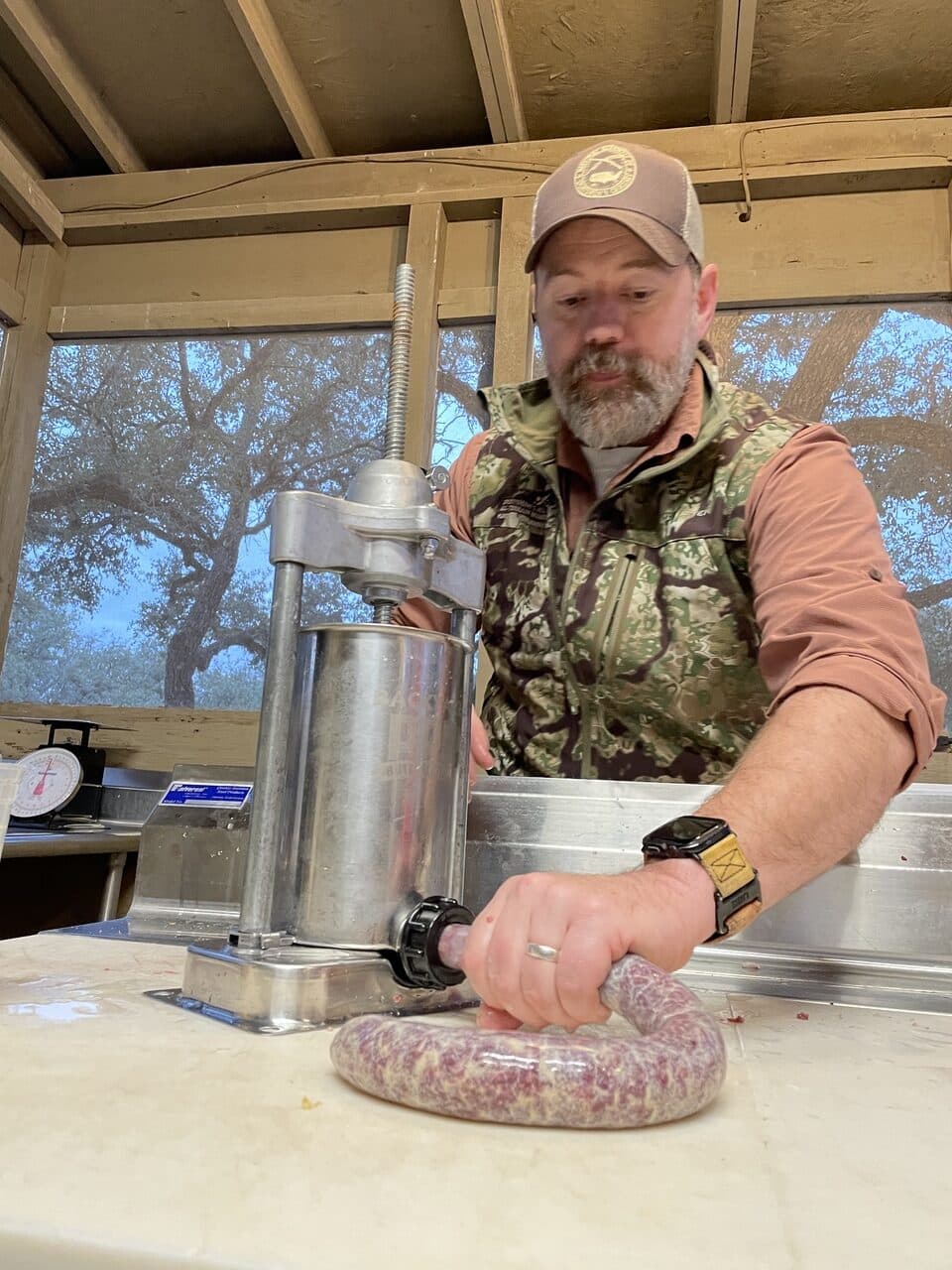
Josh then showed us how to make venison/pork sausage, and here’s a tip I’ll use from now on: store all accessories for the meat grinder in the freezer before you use them. It’ll make the process go a lot faster, and the fat will not stick to the metal as easily. Also, another tip he gave us included using a slice or two or plain white bread run through the grinder at the end of the process, to remove bits of fat that might have clung to the innards. It works.
For this course, the FTW Ranch recommended 160 rounds of ammo. I would recommend bringing good hunting or hiking boots and layers (especially for December in Texas). Camo, especially if you’re spotting and stalking, is imperative. No need for blaze orange, as it’s a private ranch.
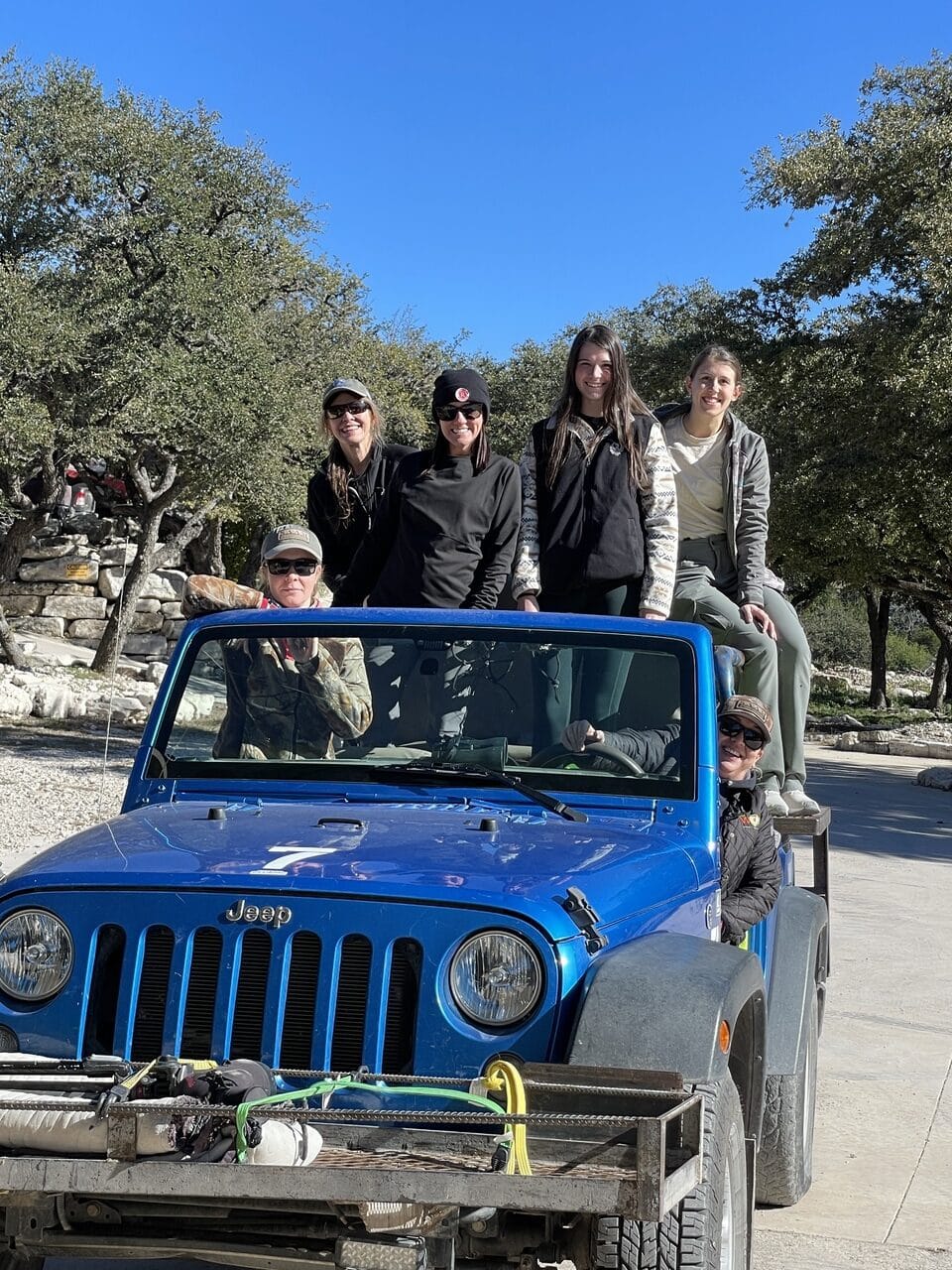
Along with all the pieces of the course, we also spent time riding around in the jeeps finding beautiful animals that frankly, you’re not going to see when you’re driving across this country (except for whitetail, in some places).
The course design, and the accommodations, staff and setting could not have been better planned or executed. I highly recommend the SAAM and hope to return someday to the FTW Ranch.
Ruger supplied everyone (Except Sarah, who opted for a different Ruger rifle since she shoots left-handed and the Gen II hasn’t been made in that, yet.) an American Rifle Generation II in 6.5 Creedmoor, equipped with Leupold VX-5HD scopes. The guns came with 20-inch, spiral fluted, threaded barrels and a factory-installed Picatinny scope base. Ruger’s patented Power Bedding system keeps the receiver in place as the barrel free floats between two stainless steel bedding blocks inserted into the stock.

At first glance, I couldn’t help but notice the finish – Ruger calls it the “Gray Splatter Gen II American,” and it’s interesting, and this type of slighty gritty finish would be perfect in inclement hunting weather, when keeping a hold of the gun always matters. It also comes with a soft rubber recoil pad with a fat heel. Ruger’s Mark Gurney, director of product management, talked to us about the recoil pad and said, “The way that it’s hollowed out, it collapses upon itself and it seems to bottom out just at the end of the recoil event.”
Another great feature is the length of pull, standard at 13.75 inches, which can be reduced to a compact 12 inches by removing the stock spacer. Interim lengths of pull can be achieved by purchasing additional stock spacers at ShopRuger.com
This rifle weighs 6.5 pounds, measures 41.25 inches overall and comes with a factory-installed radial port muzzle brake.

I liked the oversized bolt handle, with a 70-degree throw, and the three-position tang safety. The three-position safety is the perfect set-up for any hunter out there. The first position locks the gun down so that it will not fire and you cannot accidentally manipulate the bolt when it gets caught on something; the second position unlocks the bolt and you can confirm whether you’ve loaded a round without having the gun on “fire” – which is the third position. The AI-style box magazine holds three rounds.
Another thing I appreciated was the comb, which also is adjustable. It comes with the low comb, which adds ½-inch to the comb height. Especially when using the Picatinny rail, there’s no straining to see through the scope. Medium and high combs can be found at ShopRuger, as well as installation instructions.
Finally, the trigger comes in adjustable weights from 3 to 5 pounds, and has a blade-in trigger safety.
Additional calibers this year will include .204 Ruger, .223 Remington, 6.5 Creedmoor, 7mm-08 Rem., .308 Winchester and .450 Bushmaster.
Find a Ruger American Rifle Generation II for your own use. The MSRP on the rifle I shot is $729.
Publisher/Editor Barbara Baird is a freelance writer in hunting, shooting and outdoor markets. Her bylines are found at several top hunting and shooting publications. She also is a travel writer, and you can follow her at https://www.ozarkian.com. View all posts by Barbara Baird